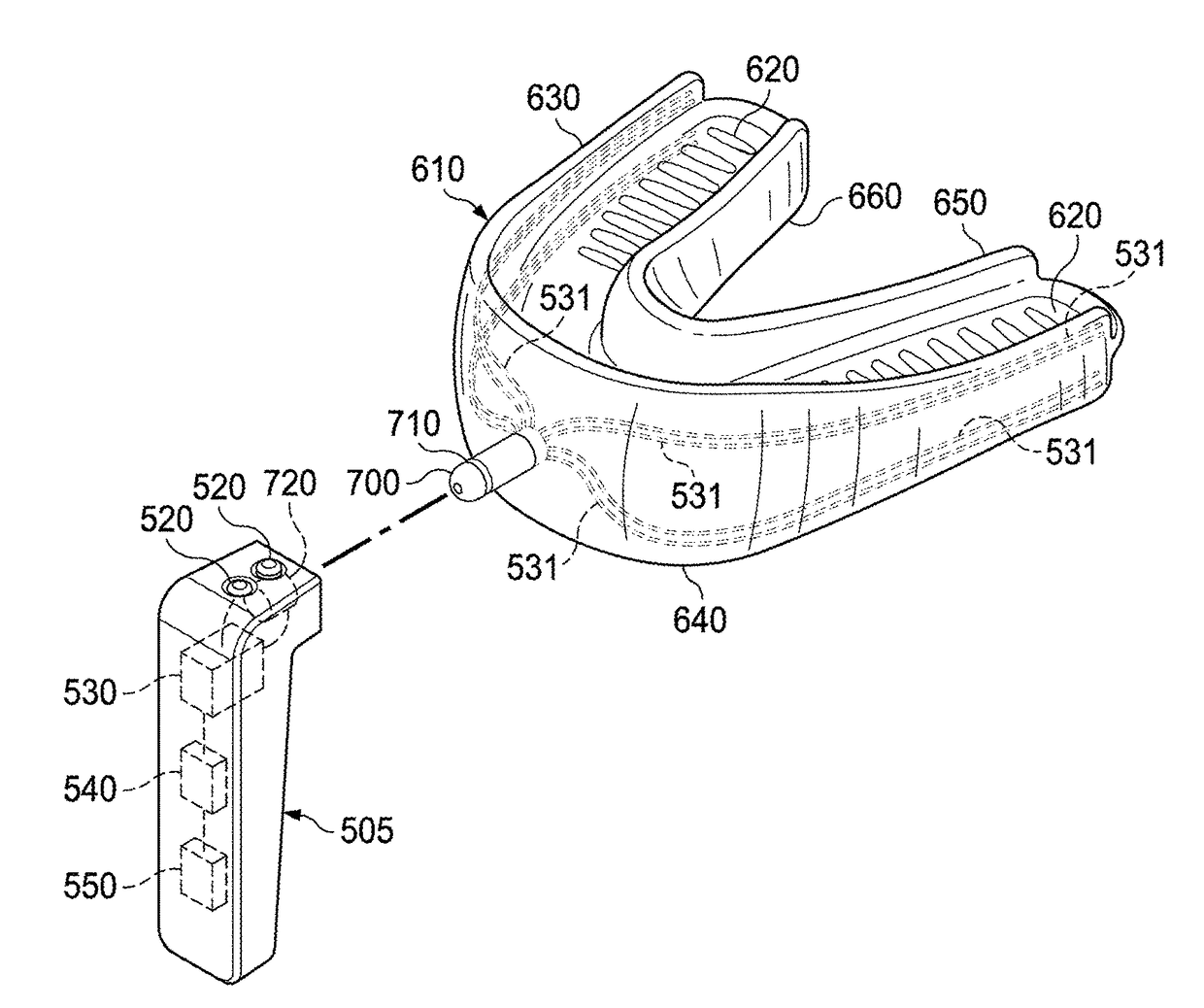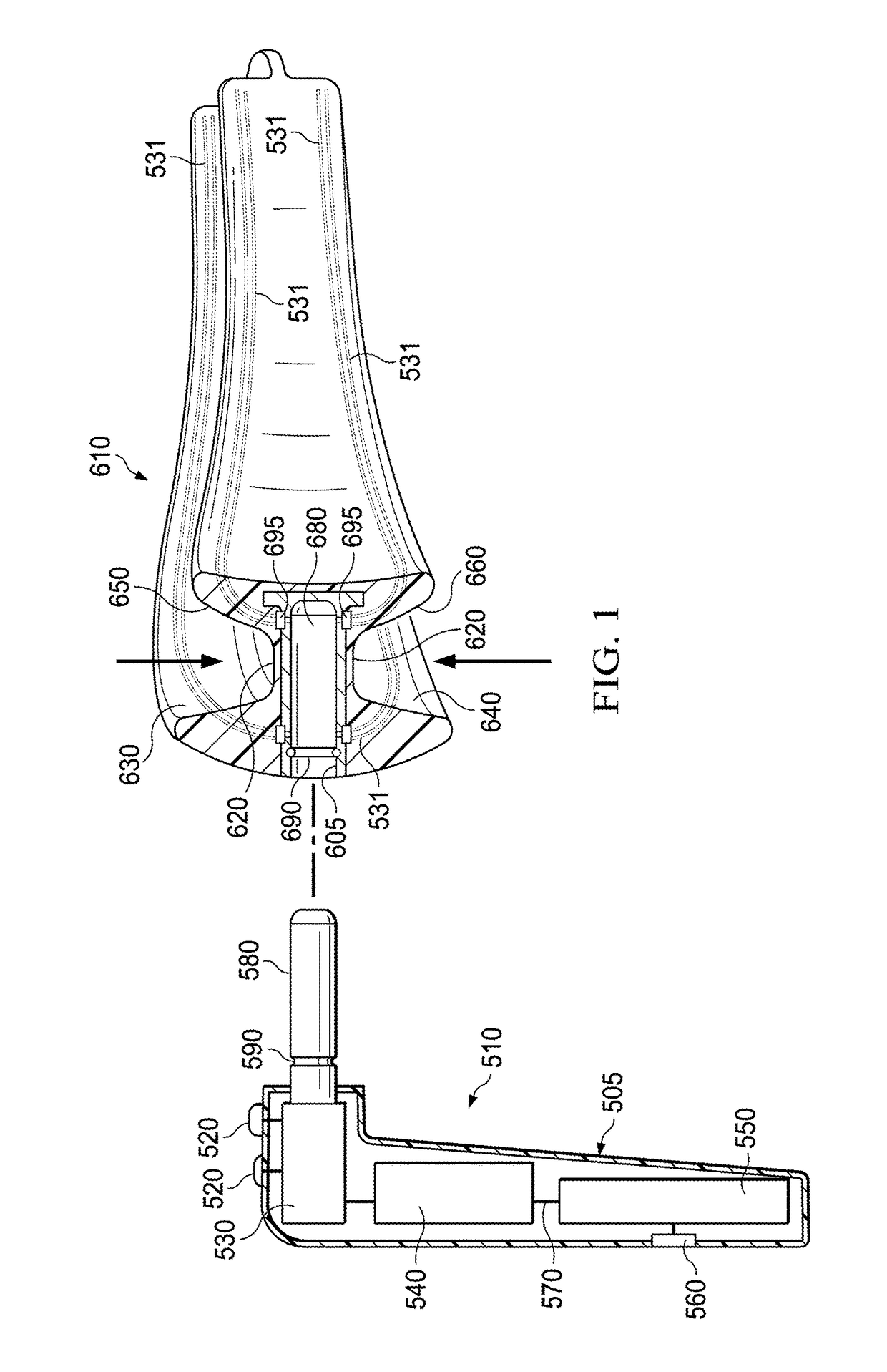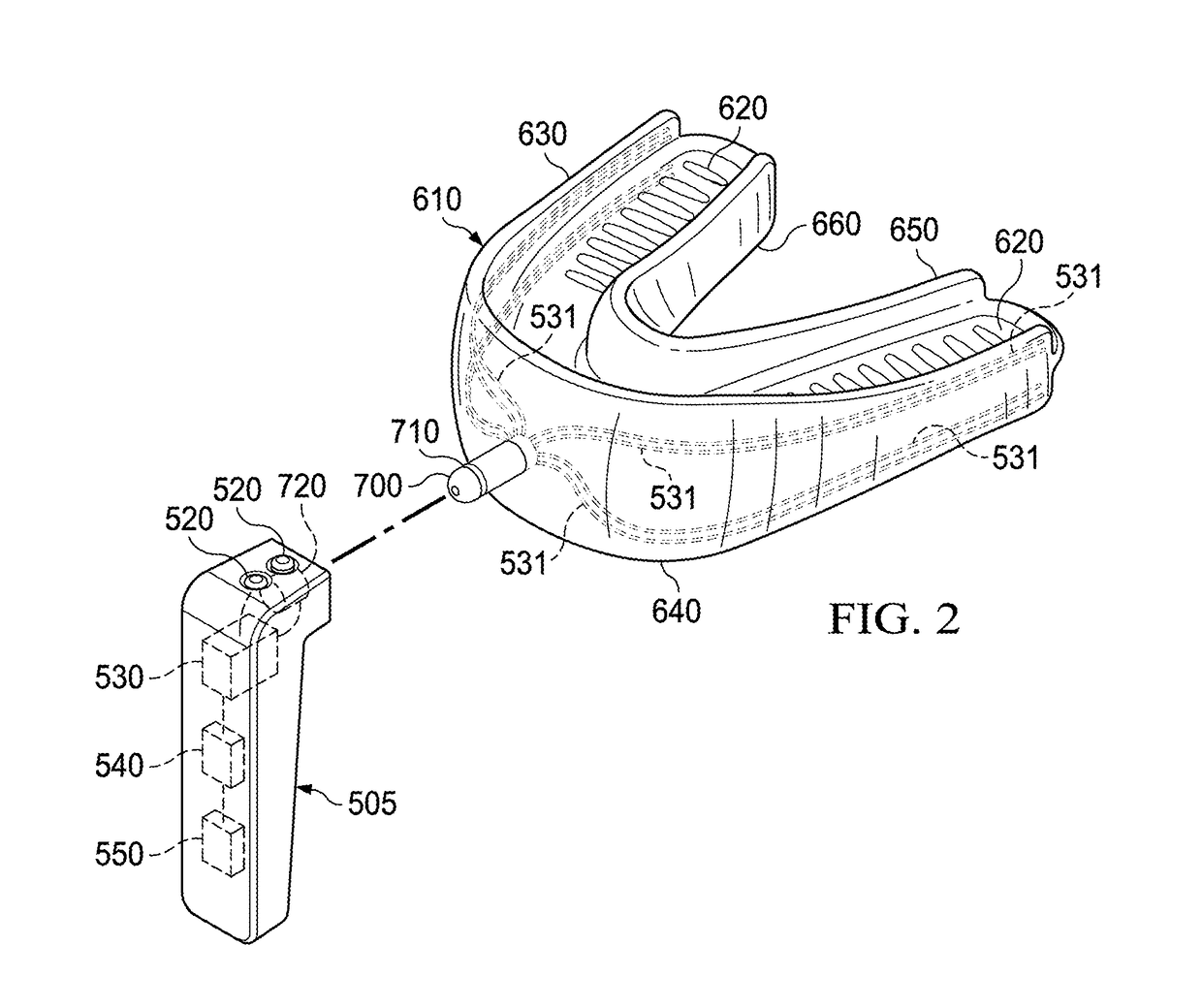Electro-orthodontic device
a technology of electro-orthodontics and orthodontic appliances, applied in the field of electro-orthodontics, can solve the problems of inability to shorten the treatment time by increasing the force, and the treatment time is usually longer. , to achieve the effect of reducing the number of wires and connections, and reducing the cost of treatmen
- Summary
- Abstract
- Description
- Claims
- Application Information
AI Technical Summary
Benefits of technology
Problems solved by technology
Method used
Image
Examples
Embodiment Construction
[0085]The disclosure provides a novel electro-orthodontic remodeling device having a special bite plate that contacts lingual and facial teeth surfaces, in addition to occlusal surfaces, and has electrodes thereon for provide current or EM fields to the teeth and / or periodontal tissue.
[0086]The invention can comprise one or more of the following embodiments, in any combination:[0087]An electro-orthodontic remodeling device comprising: an intraoral bite plate having a substantially U-shaped surface for contacting an occlusal surface of teeth; said U-shaped bite plate having an outside edge having upper and lower rims to contact upper and lower facial surfaces of teeth and gums; said upper and lower rims having anodes and cathodes on tooth and gum contacting surfaces thereof; an extraoral waterproof housing containing a power source operably coupled to a processor for controlling said voltage source and providing said anodes and cathodes with either: a current of less than 100 μAmp at...
PUM
 Login to View More
Login to View More Abstract
Description
Claims
Application Information
 Login to View More
Login to View More - R&D
- Intellectual Property
- Life Sciences
- Materials
- Tech Scout
- Unparalleled Data Quality
- Higher Quality Content
- 60% Fewer Hallucinations
Browse by: Latest US Patents, China's latest patents, Technical Efficacy Thesaurus, Application Domain, Technology Topic, Popular Technical Reports.
© 2025 PatSnap. All rights reserved.Legal|Privacy policy|Modern Slavery Act Transparency Statement|Sitemap|About US| Contact US: help@patsnap.com



